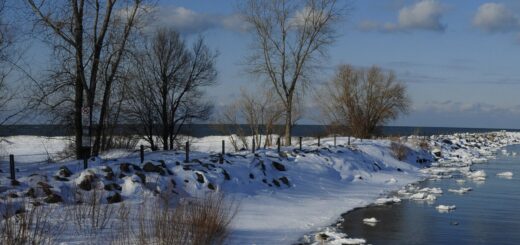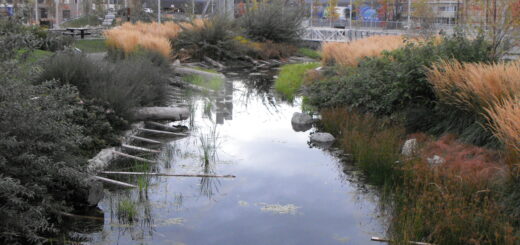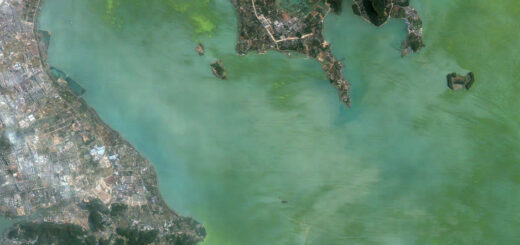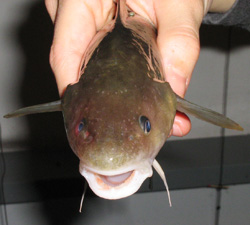Research Brief: Evaluating Preventative Algaecide Treatments
0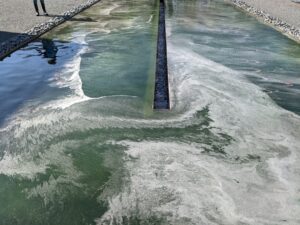
Algaecide Reaction Pools NCMA Raleigh NC (Credit: bobistraveling via Flickr CC BY 2.0)
Due to the continuous growth in frequency and severity of harmful algal blooms (HABs), many lake management groups have started investing in algaecide treatments that could help mitigate ongoing blooms. Because algaecides are typically employed as a means of responding to existing blooms, they are only a short-term solution to a more long-term issue. Without a more long-term strategy, HABs are likely to continue growing in frequency and severity unless lake managers can find a way to prevent blooms from developing.
While algaecide can help shorten blooms, preventative measures can stop blooms from ever occurring, protecting the system from developing related water quality issues.
A 2024 study published in Lake and Reservoir Management sought to test how effective different algaecides would be at preventing harmful algal blooms from occurring. The researchers hypothesized that pre-bloom algaecide treatments could result in the delayed onset and/or decreased severity of HABs.1
Methods
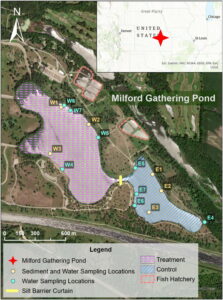
Map showing treatment and control zones, sampling sites, and silt curtain within Milford Gathering Pond. Further detailed explanation of sampling sites is included in the supplement. (Kinley-Baird et al., 2023)
Because a majority of blooms happen in the spring or summer, algaecide treatments occurred in the winter, targeting the cyanobacterial communities that reside in the sediment of lakes during the winter. These resting cells eventually mature into full blooms during the warmer parts of the year, leading to unsightly and sometimes toxic blooms—so the goal of the study was to see if algaecide treatments in the winter can prevent or minimize the impacts of blooms.
While the overall goal of the study was to test if preventative algaecide treatments were effective, the study also sought to identify what treatment options would be most effective. Four hydrogen-based algaecides were applied and assessed—three of which were granular, and one had a liquid base.
Different concentrations of the algaecides were also tested, hoping to see if lower concentrations were just as effective as higher doses, possibly saving management agencies funds.
Milford Gathering Pond was chosen as the research site due to the lake’s unique physical characteristics. A narrow channel separates the lake into two basins that allow for both a control and treatment area. The western basin receives outputs from a nearby fish hatchery and the Milford Reservoir, which leads to a great influx of contaminants that feed blooms. Comparatively, the eastern basin is less polluted.
The western basin was chosen as the treatment area, while the eastern basin was used as the control due to the western basin receiving a greater amount of inputs.
Prior to the algaecide treatments, both basins were monitored routinely between September 2021 and March 2022. These initial tests were conducted in order to confirm the presence and viability of resting cells as well as measure densities in sediments over time.1
Laboratory tests on site-collected samples were conducted in February 2022 to measure and compare the effectiveness of several peroxide-based algaecides against cyanobacterial resting cells. 1 Finally, the algaecides were applied to various zones in the treatment basin and then sampling was conducted to assess the effectiveness of each formulation
Results
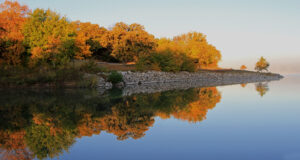
Milford Lake and the Gathering Ponds. (Credit: Acorns Report via Flickr CC BY 2.0)
Pre-treatment lake monitoring revealed that there were viable resting cells found in the sediment with prominent genera including phanizomenon, Dolichospermum, and Microcystis.
The laboratory tests revealed “there were no significant differences in planktonic cell densities between treatment concentrations and untreated controls for any of the algaecides evaluated.”1 However, the highest concentrations evaluated for each granular algaecide resulted in the lowest average cell densities.
Comparing the granular sodium carbonate peroxyhydrate (SCP) and liquid-based algaecide solutions, the granular solution was found to be more effective but were all similar in efficacy when applied once at the maximum concentration. They also found the two consecutive treatments were more effective than the single treatments for two of the tested algaecides.
In the lake tests, there were no measurable differences in resting cell densities in sediments immediately following treatments. Similarly, no relevant differences were measured in recruitment potential in the incubation studies.
Still, the study concludes that there is a line of evidence pointing to the potential of algaecide being used as a preventive measure. More research will need to be done in order to truly test the capabilities of algaecides over time.
Source
- Kinley-Baird, C. M., Smith, E. F., Calomeni, A. J., McQueen, A. D., Gusler, G. O., Boyer, M., Decker, K.N., Clyde, G. A. (2023). Evaluation of preventative algaecide treatments for cyanobacterial resting cells in sediments of a central US lake. Lake and Reservoir Management, 39(4), 340–355. https://doi.org/10.1080/10402381.2023.2271428




